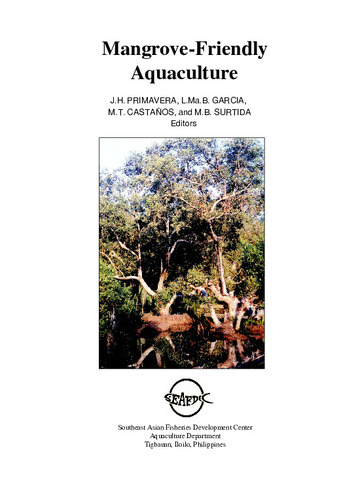Perlihatkan publikasi sederhana
Biotechnological researches at the Prefectural Fisheries Experimental Station in Japan
| dc.contributor.author | Kato, Teichi. | |
| dc.contributor.editor | Lacanilao, F. | |
| dc.contributor.editor | Coloso, Relicardo M. | |
| dc.contributor.editor | Quinitio, Gerald F. | |
| dc.date.accessioned | 2011-06-03T01:00:56Z | |
| dc.date.available | 2011-06-03T01:00:56Z | |
| dc.date.issued | 1994 | |
| dc.identifier.citation | Kato, T. (1994). Biotechnological researches at the Prefectural Fisheries Experimental Station in Japan. In F. Lacanilao, R. M. Coloso, & G. F. Quinitio (Eds.), Proceedings of the Seminar-Workshop on Aquaculture Development in Southeast Asia and Prospects for Seafarming and Searanching; 19-23 August 1991; Iloilo City, Philippines. (pp. 68-74). Tigbauan, Iloilo, Philippines: Aquaculture Department, Southeast Asian Fisheries Development Center. | en |
| dc.identifier.isbn | 971851127X | |
| dc.identifier.uri | http://hdl.handle.net/10862/102 | |
| dc.description.abstract | Biotechnological studies have been conducted in 46 Prefectural Experimental Stations in Japan in 1991. In 41 of these, research focused on chromosome set manipulation including triploidy for sterilization and gynogenesis for sex control. Practical application of biotechnology for culture of each species is the main interest because each prefecture has its own project for promoting the local fisheries industry. Therefore, the commodities being studied are of commercial importance comprising of about 40 species.The culture production of Japan in 1988 totaled 1,426,000 tons, 95% of which consisted of 10 species. Biotechnology is not widely used since most seeds are not from hatcheries, but from the wild. Recently, however, promising results on the study of sex determination mechanism in the Japanese flounder have been adopted for actual seed production. This has attracted attention as an approach to mass production of all-female seedlings. | en |
| dc.language.iso | en | en |
| dc.publisher | Aquaculture Department, Southeast Asian Fisheries Development Center | en |
| dc.subject | Paralichthys olivaceus | en |
| dc.subject | Japan Sea | en |
| dc.subject | Japan | en |
| dc.title | Biotechnological researches at the Prefectural Fisheries Experimental Station in Japan | en |
| dc.type | Conference paper | en |
| dc.citation.spage | 68 | |
| dc.citation.epage | 74 | |
| dc.citation.conferenceTitle | Seminar-Workshop on Aquaculture Development in Southeast Asia and Prospects for Seafarming and Searanching; 19-23 August 1991; Iloilo City, Philippines. | en |
| dc.subject.asfa | seed (aquaculture) | en |
| dc.subject.asfa | sex reversal | en |
| dc.subject.asfa | gynogenesis | en |
| dc.subject.asfa | cultured organisms | en |
| dc.subject.asfa | seed production | en |
| dc.subject.asfa | sterilization | en |
| dc.subject.asfa | sex determination | en |
| dc.subject.asfa | research institutions | en |
| dc.subject.asfa | aquaculture enterprises | en |
| dc.subject.asfa | chromosomes | en |
| dc.subject.asfa | fish industry | en |
| dc.subject.asfa | biotechnology | en |
| dc.subject.asfa | fish culture | en |
Files in this item
Publikasi ini ada di koleksi berikut
-
ADSEA '91 [21]
Proceedings of the Seminar-Workshop on Aquaculture Development in Southeast Asia and Prospects for Seafarming and Searanching, 19-23 August 1991, Iloilo City, Philippines





